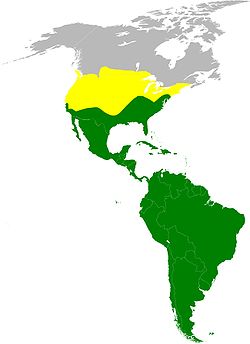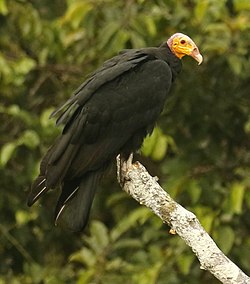| Cathartes | |
|---|---|
 | |
| Turkey vulture in Morro Bay, California | |
| Scientific classification | |
| Kingdom: | Animalia |
| Phylum: | Chordata |
| Class: | Aves |
| Order: | Accipitriformes |
| Family: | Cathartidae |
| Genus: | Cathartes Illiger, 1811 |
| Type species | |
| Vultur aura [1] [2] Linnaeus, 1758 | |
| Species | |
| |
 | |
| Approximate distribution of the genus Cathartes. Green indicates that at least one species is resident year-round and yellow shows areas where one species, the turkey vulture, is a summer-only breeding visitor. | |
The genus Cathartes includes medium-sized to large carrion-feeding birds in the New World vulture (Cathartidae) family. The three extant species currently classified in this genus occur widely in the Americas. There is one extinct species known from the Quaternary of Cuba. [3]
Contents
- Taxonomy
- Description
- Systematics
- Species
- Description 2
- Distribution and habitat
- Ecology and behaviour
- References
Cathartes is the Greek word καθαρτής, for "purifier," referring to these vultures' role as "cleansers" that "tidy up" decomposing corpses in nature.







